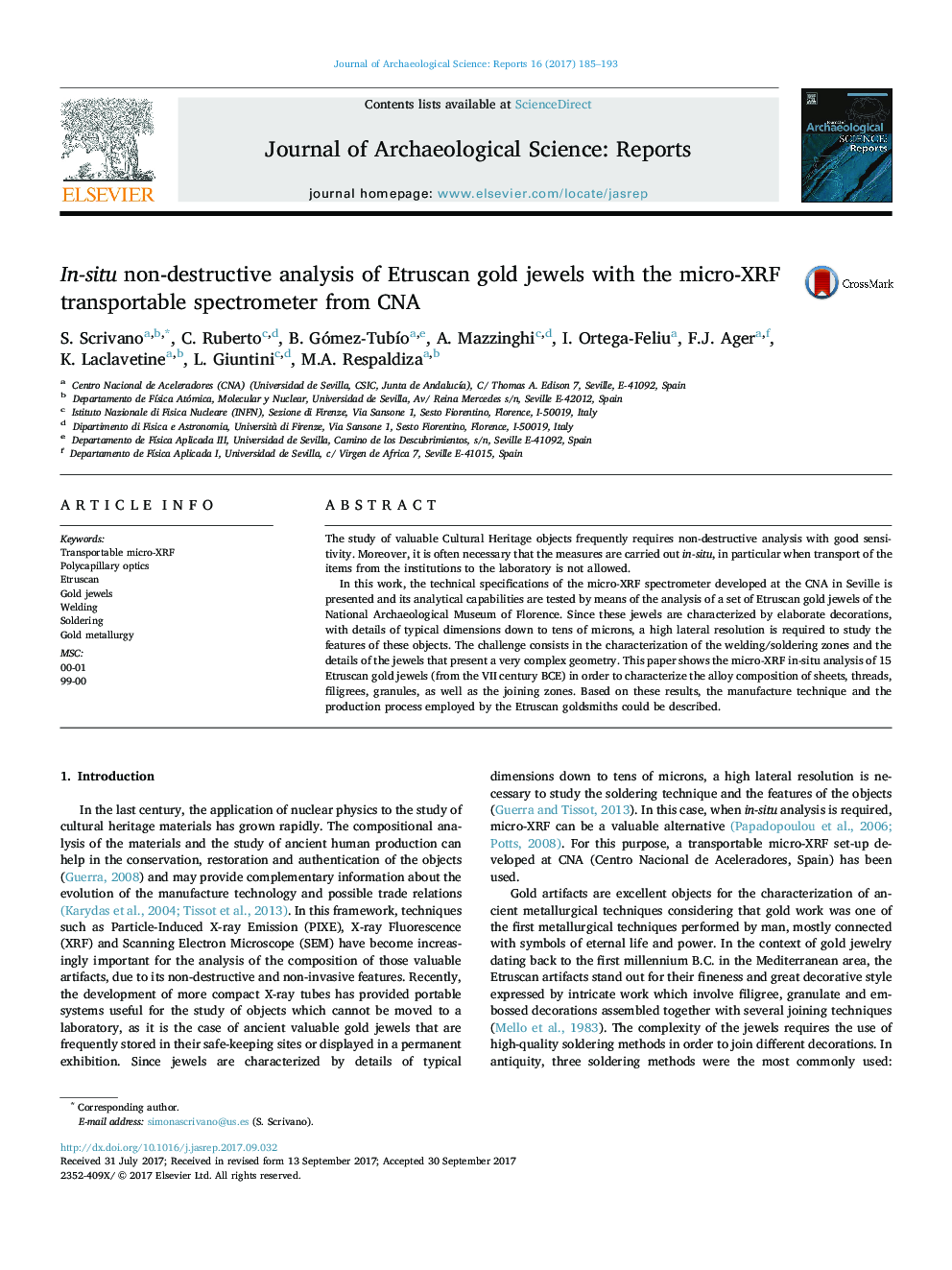| Article ID | Journal | Published Year | Pages | File Type |
|---|---|---|---|---|
| 5112160 | Journal of Archaeological Science: Reports | 2017 | 9 Pages |
Abstract
In this work, the technical specifications of the micro-XRF spectrometer developed at the CNA in Seville is presented and its analytical capabilities are tested by means of the analysis of a set of Etruscan gold jewels of the National Archaeological Museum of Florence. Since these jewels are characterized by elaborate decorations, with details of typical dimensions down to tens of microns, a high lateral resolution is required to study the features of these objects. The challenge consists in the characterization of the welding/soldering zones and the details of the jewels that present a very complex geometry. This paper shows the micro-XRF in-situ analysis of 15 Etruscan gold jewels (from the VII century BCE) in order to characterize the alloy composition of sheets, threads, filigrees, granules, as well as the joining zones. Based on these results, the manufacture technique and the production process employed by the Etruscan goldsmiths could be described.
Related Topics
Social Sciences and Humanities
Arts and Humanities
History
Authors
S. Scrivano, C. Ruberto, B. Gómez-TubÃo, A. Mazzinghi, I. Ortega-Feliu, F.J. Ager, K. Laclavetine, L. Giuntini, M.A. Respaldiza,
